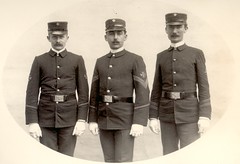Camp Letterman Hospital
Gettysburgh (sic) Pa, Sept. 12th 1863
Sir
Yours of the 11th is just received. As a general rule Medical Descriptive Lists have not been forwarded with patients sent to Baltimore and Philadelphia because, except those transferred by special order, nearly all those recently sent have been well or so nearly well that their Surgical histories could be completed. When cases terminate the histories are classified and compiled in a book ruled like the enclosed form. I was intending to forward the lists to you as soon as this was done; but you will save yourself a great deal of labor if you will wait until the compilation is done. You have no idea how difficult it has been to get even such poor histories as those I send to day. I have approved Dr. McArthur to attend to the compilation and have directed him to send the lists back unless they were tolerably satisfactory, in many cases this has been done several times before any thing of the least use could be obtained. Many of the Medical officers who have been relieved have left no records behind or records so imperfect as to be useless.
At the time your keg of whiskey was received there was no whiskey at the dispensary to I exchanged it for alcohol. We are now saving a considerable quantity of postmortem specimens, mostly injured bones and joins. Some cheap spirits for their preservation would be acceptable.
Except in very rare instances no capital operations are now performed.
It will be impossible for me to make a report and tabular statement of all the gunshot wounds for the month of July. On the 27th of May Dr. Letterman ordered that the monthly reports of the different corps hospitals should be made through the Medical Directors of the Corps to him. I suppose the reports for July were forwarded accordingly. At that time I had not sufficient clerical assistance to do my ordinary every day business, much less to consolidate the tabular statements.
The Corps registers have been copied and the names arranged alphabetically; except the registers of the 6th and 12th corps, none were complete, and that of the 1st Corps containing, according to Dr. Ward the Surg. in charge, 2200 names was taken to the [illegible], contrary to my orders, before it was copied.
As soon as the men are sufficiently recovered to need no further surgical treatment we send them off; the Union men to Philadelphia and the Confederates to Baltimore; very few, if any, will be able to serve in the field again.
Respectfully
Your obt. servt.
Henry James
Surg. U.S.A.
Surg J. H. Brinton U.S.A.









.JPG)
